Spring
March
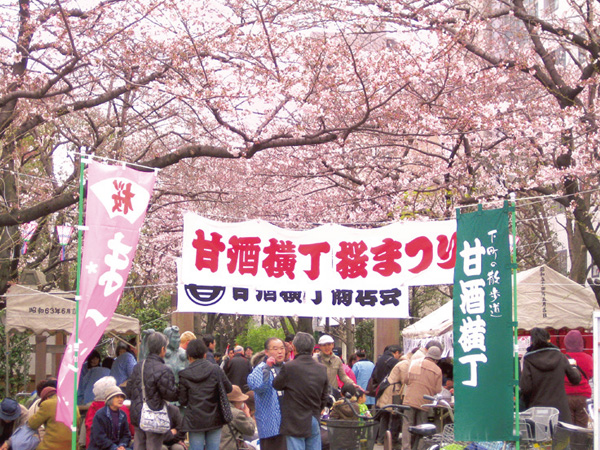
Cherry Blossom Festival at Ningyocho Amazake Yokocho
Last Sunday in March
This annual spring event is held in the Amazake Yokocho area, part of the Ningyocho neighborhood of Nihonbashi. Complimentary non-alcoholic amazake, a sweet, fermented rice drink, is served; the festivities end when all the amazake is gone. Lottery tickets distributed by participating shops give visitors a chance to win special prizes from Amazake Yokocho.
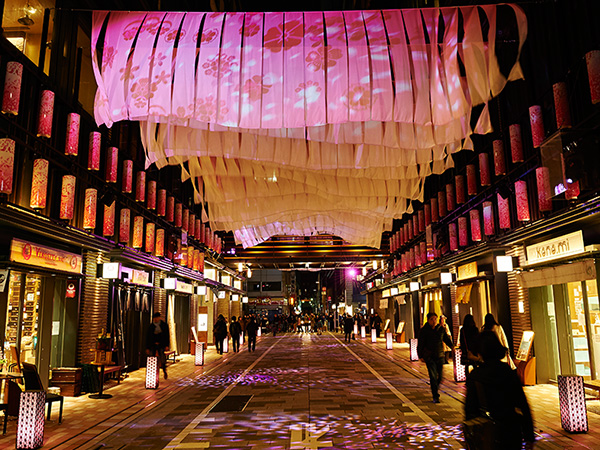
Nihonbashi Sakura Festival
Mid March to Early April
Many events take place in areas famous for cherry blossoms, such as Edo Sakura-dori Street and Nihonbashi Sakura-dori Street, with sakura illuminations and stalls lining the streets. There are also cruises and a free bus operating in the area.
April
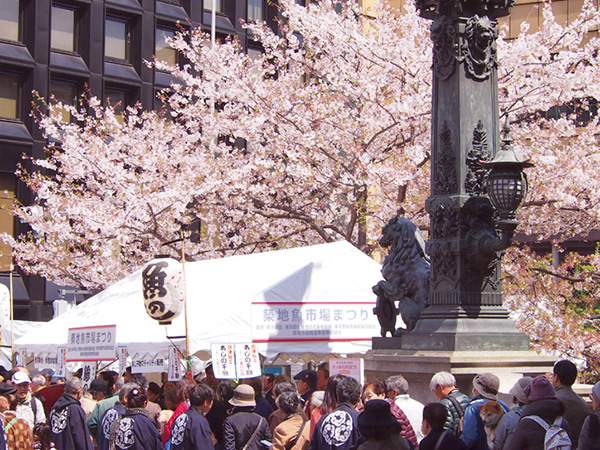
The Famous Nihonbashi Bridge Spring Festival
First Sunday in April
This festival was created to reinvigorate the Nihonbashi area and enhance the community’s love for and investment in the historic district. Festivities are held all around Nihonbashi, including markets with crafts from famous, long-standing shops in business since Nihonbashi’s earliest days.
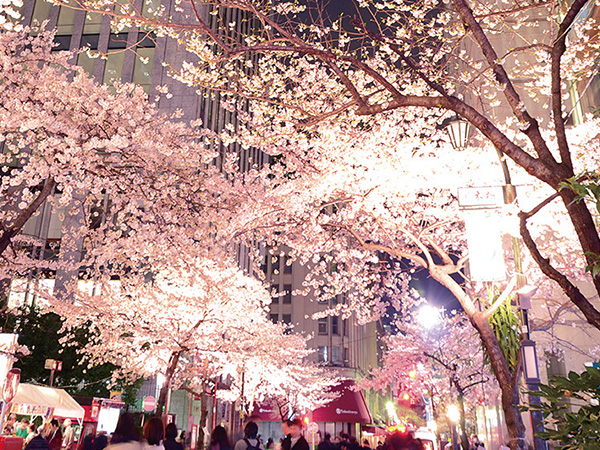
Nippachi-kai Cherry Blossom Festival
First Sunday in April
This festival is held along Sakura-Dori Street with part of the street closed to vehicles. Booths serving drinks and snacks fill both sides of the street and entertainment includes live jazz performances. The cherry blossoms are lit up after sunset, so visitors can enjoy the festival both day and night.
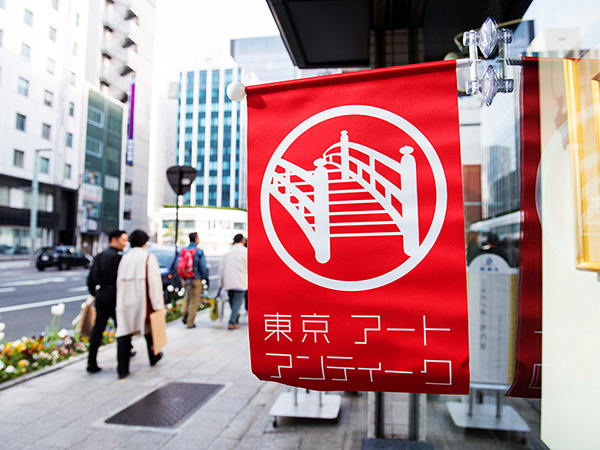
Tokyo Art & Antiques : The Nihonbashi/Kyobashi Art Festival
Mid April
One of the largest community-based art events in Japan. Even people who are new to art can enjoy themselves visiting galleries offering free events in the Nihonbashi/Kyobashi area. No reservations necessary.
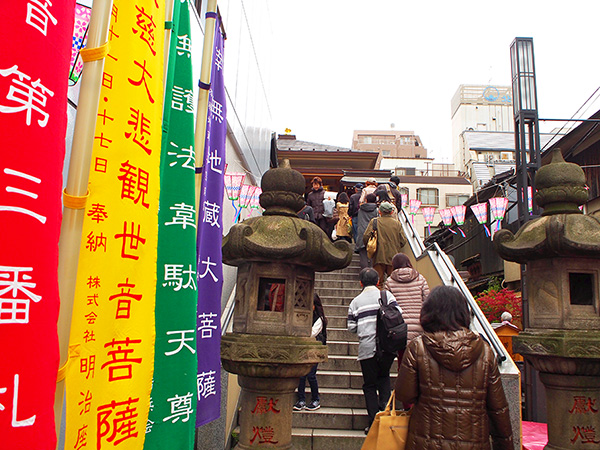
Ningyocho Ogannonji Temple Flower Festival
Around April 8
Held annually at Ogannoji Temple, this Buddhist festival celebrates the Buddha’s birthday. Visitors to the festival can participate in a lottery and enjoy complimentary birthday treats of amazake and ningyoyaki, doll-shaped baked sweets with red bean filling.
May
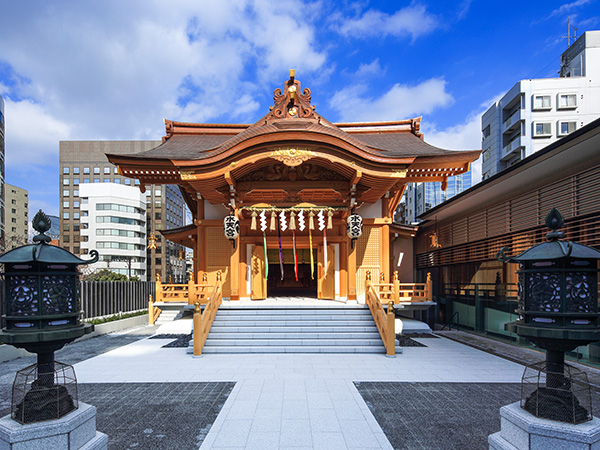
Suitengu Shrine Grand Festival
May 5
Suitengu Shrine, which enshrines the god of safe childbirth holds a Shinto ritual on May 5th of each year to pray for a good harvest. Considered the most important of the festivals at Suitengu Shrine, it features temporary shops packed in and around the shrine, and always draws a large crowd.
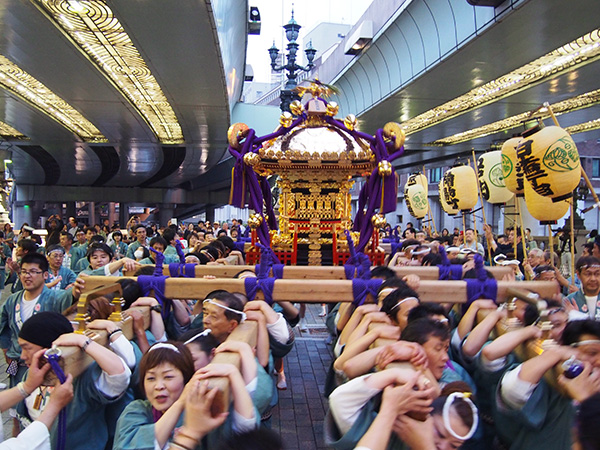
Kanda Festival
Mid May, odd numbered years
The Kanda Festival is a religious celebration for the chief ujigami, or guardian deities, of central Tokyo, including the Kanda and Nihonbashi areas and the 108 neighborhood councils. Centered around Kanda Shrine, the festival features amazing sights including the Shinko-sai, a massive parade of performers in traditional Japanese garb, and the Mikoshi Miya-iri, a ceremony where 200 portable shrines called mikoshi are paraded back to their home shrines at the end of the festival.
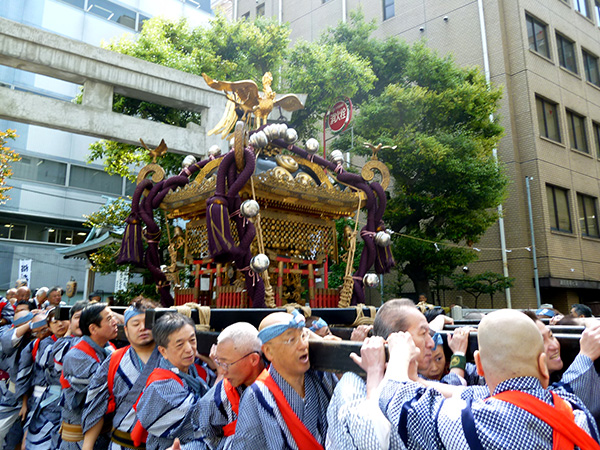
Suginomori Shrine Annual Grand Festival
Mid May
This is a festival held annually at Suginomori Shrine, where Ebisu, the god of merchants and luck, is worshipped. Parishoners and locals can pray at this small, 1,000-year-old shrine for prosperity in the coming year. The shrine is also one of those belonging to the Shichifukujin, the Seven Deities of Good Fortune. Every third year a procession of mikoshi, or portable shrines, leaves from the main shrine and is an event well worth seeing.
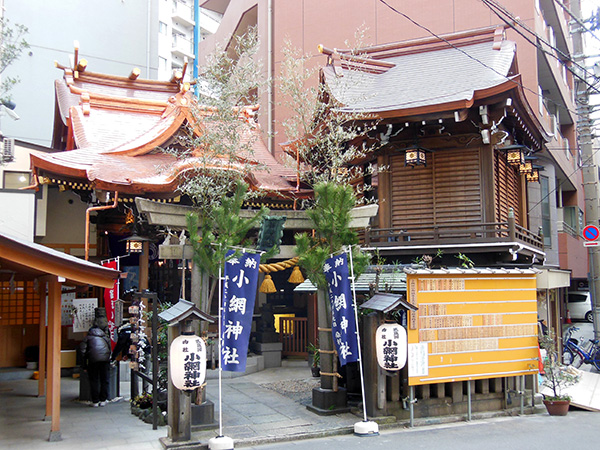
Koami Shrine Shinko Grand Festival
End of May
Once every five years, Koami Shrine, famous for bestowing good luck and warding off evil, holds the Shinko Taisai, “a grand procession of the gods,” in which a large portable shrine and massive shishi (lion) heads are paraded. The Kage-matsuri, a smaller festival held between grand festival years, features a beer garden organized by the Koami Shrine Community Association and always has a warm, lively atmosphere.
Summer
June
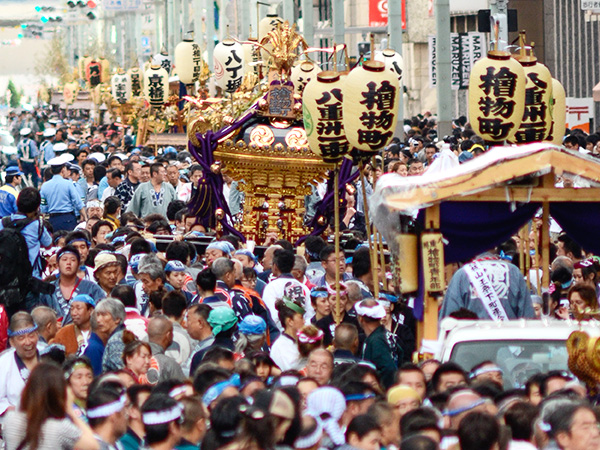
Sanno Festival
Mid June, even numbered years
Famous as one of Japan’s three major festivals, the Sanno Festival is a Hie Shrine ritual rich in tradition and history. At the main event, called the Shinko-sai Parade, portable phoenix floats called Gohoren, Miya Mikoshi portable shrines, and dashi floats are paraded through the shrine’s surrounding district. The retinue of five hundred people clad in traditional royal costumes is an incredible sight to see. The majestic and regal atmosphere is something right out of a traditional picture scroll.

Chi no Wa-kuguri at Koami Shrine
June 20-30
“Chi no Wa-kuguri” is an old ritual where parishoners pass through a huge wreath of rice straw, specially erected for the event, to cleanse themselves of any bad luck and misfortune suffered in the first half of the year. Visitors can then go on to pray at Koami Shrine for a peaceful second half of the year.
July
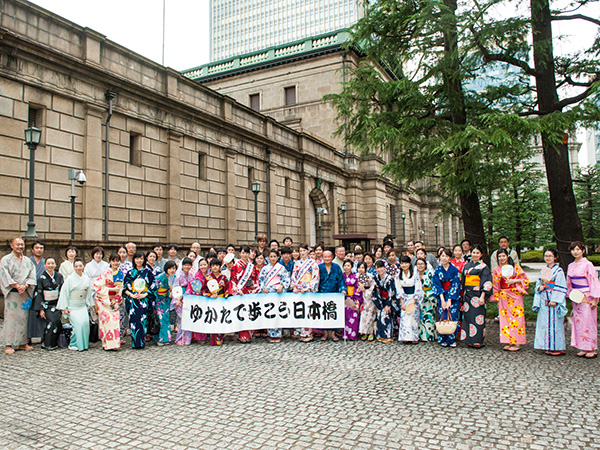
Tanabata Yukata Festival
July 7 (if a weekend, the prior Friday)
Nihonbashi holds a yearly Tanabata Festival on July 7. Also known as the Star Festival, it is part of the Yukata Day first started by the Japan Yukata Association. During Tanabata, festival-goers in yukata (a kind of casual summer kimono) write wishes on strips of paper and hang them on bamboo branches in hopes their wishes will come true. Nihonbashi’s festival also features a prize drawing for visitors wearing yukata, as well as other events for those beating the summer heat in their yukata.
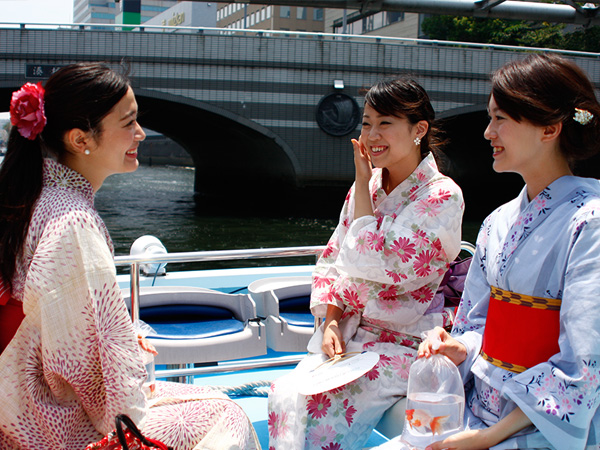
Eco Edo Nihonbashi
July – September
Travel back in time and see firsthand how people in the Edo Period lived in the summer, with traditions like “uchimizu” (ladling water onto the ground) and wearing cotton summer kimono called yukata. Participating neighborhood shops often offer special services and discounts to customers wearing yukata, and others provide yukata rental services.
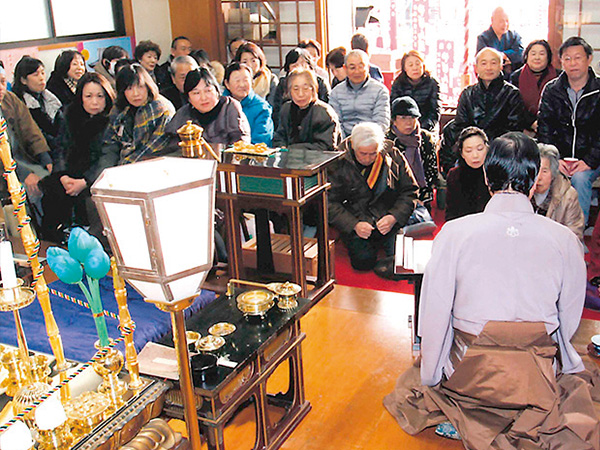
Yagenbori Summer Evening Kodan Storytelling
End of July / Beginning of August
This is a kodan storytelling event held at Yagenbori Fudo-in, a temple closely associated with this centuries-old Japanese art. Living National Treasure and kodan storyteller Ichiryusai Teisui takes part. Dedicatory kodan storytelling is also held on the 28th every month with a variety of storytellers.
Autumn
October
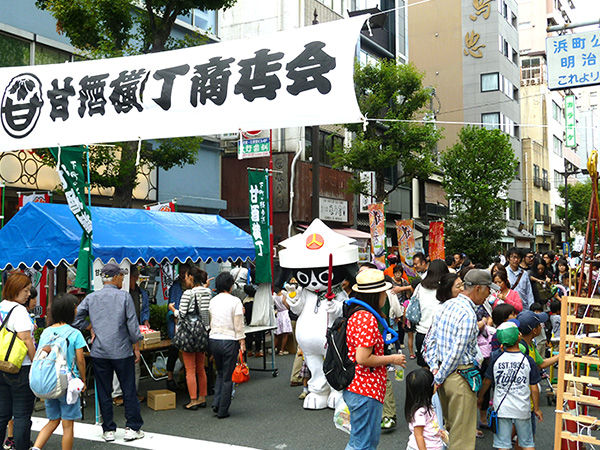
Ten Ten Festival
Around October 10
Sansui-kai, a youth group in the Ningyocho Shopping Street area, organized and started this festival in 1989 to share Ningyocho traditions. The Ten Ten Festival takes place at Suitengu Shrine, a religious site closely associated with Ningyocho and dedicated to the deity of childbirth. The festival was named “Ten Ten” after the old Japanese saying that a child is born after ten months and ten days of pregnancy.
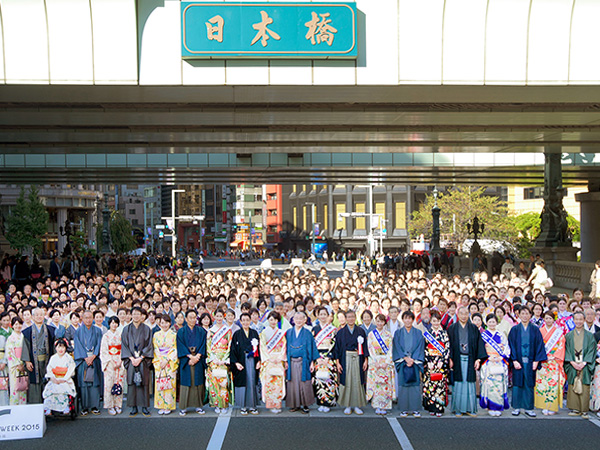
Tokyo Kimono Week: Kimono, Wa, Nihonbashi
Mid May, odd numbered years
The Kanda Festival is a religious celebration for the chief ujigami, or guardian deities, of central Tokyo, including the Kanda and Nihonbashi areas and the 108 neighborhood councils. Centered around Kanda Shrine, the festival features amazing sights including the Shinko-sai, a massive parade of performers in traditional Japanese garb, and the Mikoshi Miya-iri, a ceremony where 200 portable shrines called mikoshi are paraded back to their home shrines at the end of the festival.
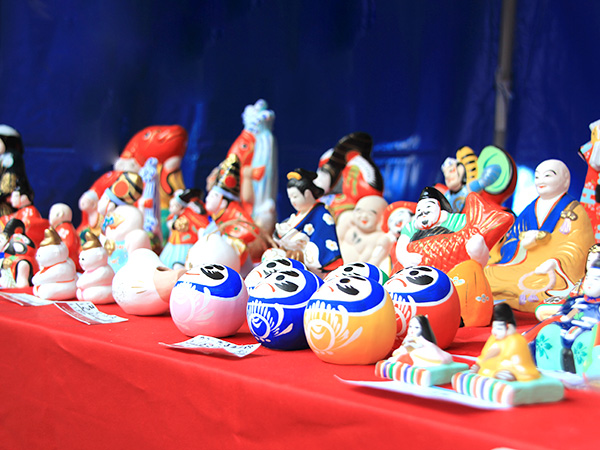
Ningyo Ichi Doll Market
Mid October
This yearly doll market takes place on the famous Ningyocho-Dori, literally “Doll Street.” Shops specializing in a huge variety of dolls set up stalls along the street, offering artisan Japanese and Western dolls as well as toy dolls.
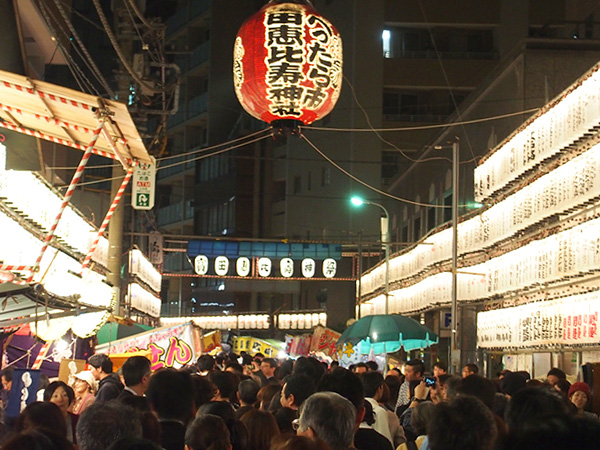
Nihonbashi Ebisuko Bettara Ichi Market
October 19-20
This is exposition and market featuring bettarazuke, Tokyo-style pickled radish, is held in the area around Takarada Ebisu Shrine. The market and the bettarazuke pickles are quintessential images of autumn in Tokyo. More than 500 booths line the streets during the market, including stalls serving market foods like yakisoba noodles and grilled chicken, in addition to the main bettarazuke booths. The Bettara Ichi Market holds the title of Chuo City’s largest annual market, based on the huge number of stalls and the visitors they attract.
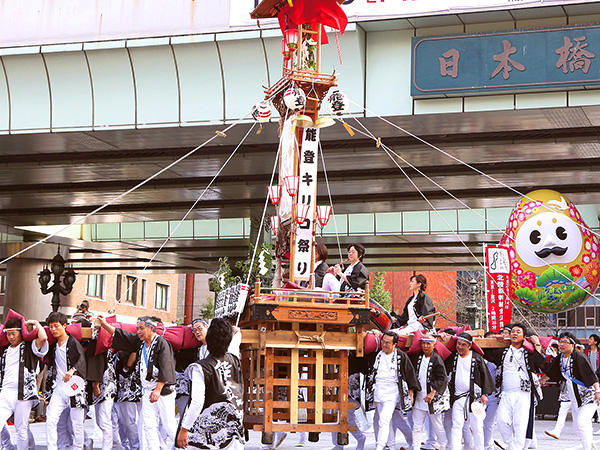
Nihonbashi-Kyobashi Festival
Mid to Late October
This festival is held as a collaboration amongst Nihonbashi and Kyobashi area residents, groups, and local companies. Events include a large-scale parade where some three thousand people make their way down Chuo-Dori Street, the district’s main street and the site of the Nihonbashi Bridge.
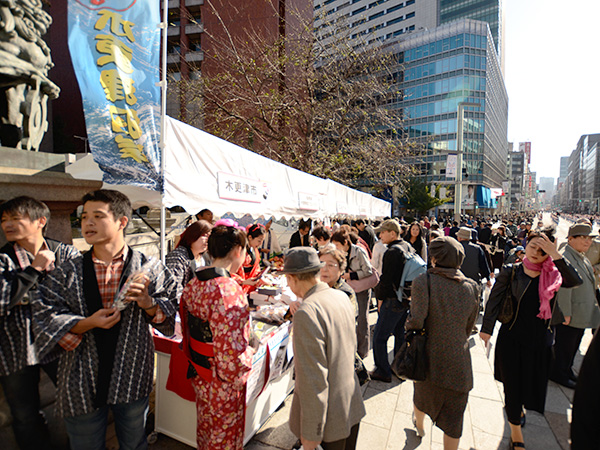
The Famous Nihonbashi Bridge Autumn Festival
Held annually on the same dates as the Nihonbashi-Kyobashi Festival
This festival was created to reinvigorate the Nihonbashi area and enhance the community’s love for the historic district, and is held annually on the same dates as the Nihonbashi-Kyobashi Festival. A variety of events are held, and crafts from famous, long-standing shops in business since Nihonbashi’s earliest days are available at stalls at the foot of Nihonbashi Bridge, an important cultural property.
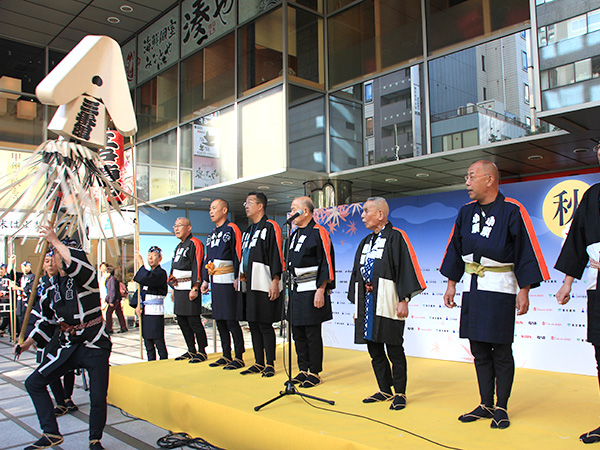
Nippachi-kai Oedo Festival
Held annually on the same dates as the Nihonbashi-Kyobashi Festival
This festival centers on the area between Nihonbashi and Yaesu, and is held annually on the same dates as the Nihonbashi-Kyobashi Festival. The festival route is lined with stalls selling soba and tempura, and there are live performances of gagaku, or ancient court music, and jazz to liven the atmosphere.
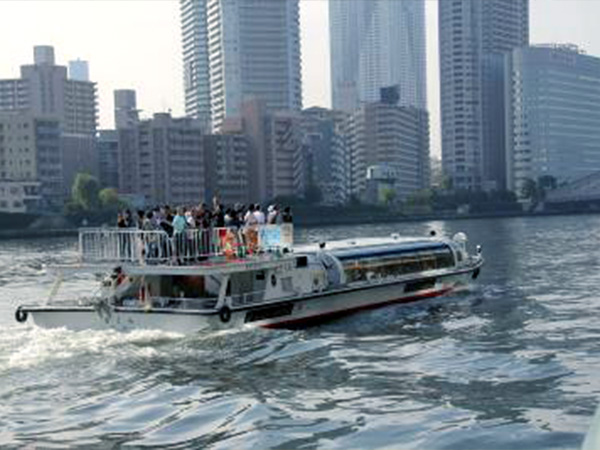
Chuo City Marugoto Museum
Late October or Early November
This event offers free bus and boat tours around popular cultural events and facilities as a way of introducing visitors to Chuo City’s cultural appeal. With stops at famous sites and relics, galleries, museums and shorelines, visitors can truly experience all of Chuo City as a museum.
November
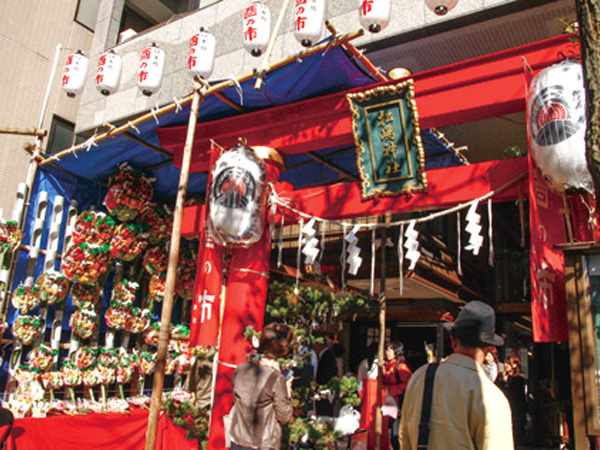
Tori no Ichi Market
“Day of the Rooster” in November
This religious festival is held each November on the Day of the Rooster, near Matsushima Shrine, and is devoted to Daikokuten, one of the seven Nihonbashi Deities of Good Fortune. The name plays on the words tori-komu, which means to rake in, and the tori of “Tori no Ichi Market,” which means bird or rooster. Large crowds of shrine visitors purchase good luck kumade, or highly decorated rakes, to rake in good luck and good fortune in business.

Koami Shrine Doburoku Festival
28-Nov
This is a unique festival held at Koami Shrine, a cultural asset of Chuo City. Visitors come to thank the deities for an abundant harvest, and pray for good health, good luck, and warding off evil. Free doburoku, a kind of sake, is an added bonus. A Satokagura performance, a folklore cultural asset of Japan, also takes place as an offering to the local god.
Winter
December

Osame no Suitengu Shrine: Returning to Suitengu Shrine
December 5
This is the day to return omamori, good luck amulets often purchased at the beginning of the year, to Suitengu Shrine. Visitors return their amulets and thank the deities that imbued them with power for the safe year as it comes to an end. It is Suitengu Shrine’s last festival of the year.
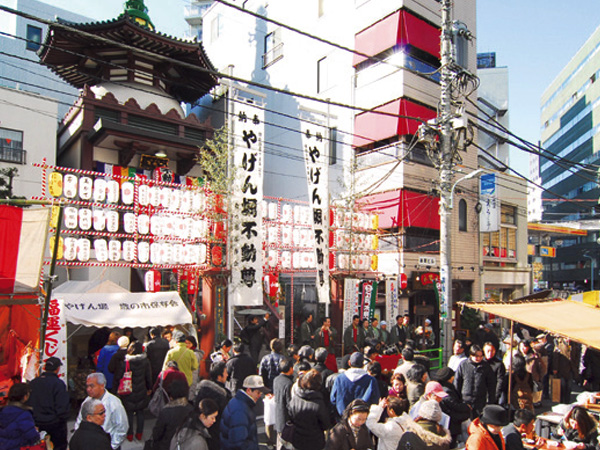
Osame no Toshi no Ichi
December 27-29
This winter event, held in the Higashi Nihonbashi 2 chome area, is a traditional year-end festival with food, shops, and special booths selling New Years decorations. Pick up your own iconic “shimenawa,” a sometimes elaborately adorned loop of straw hung outside the front door in the first few days of the new year, and herald in a fresh start.
January
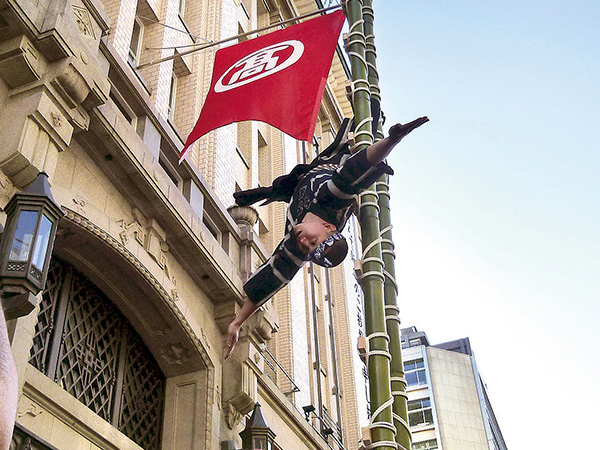
New Year’s Celebrations
January 2 – 4
The new year begins with a sale on January 2 at shops along the main street. Shops often sell fun-filled, red lucky bags with mystery products from their inventory. Festive lion dances and traditional events from the Edo period like kiyari, a traditional folk song, matoi-furi, or vigorous displays of firemen’s standards, and hashigo-nori, or ladder climbing, are performed, all to heighten the mood of the New Year.
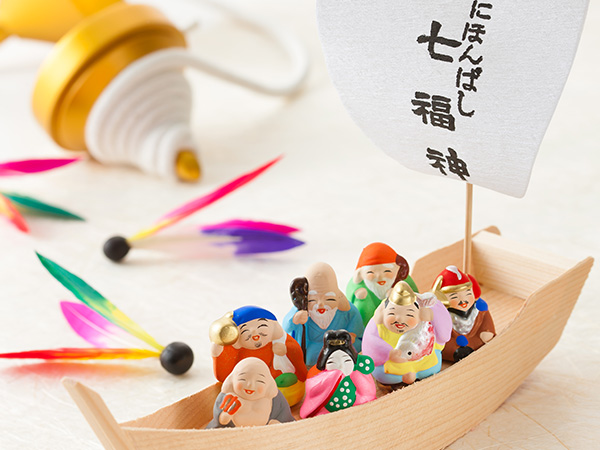
Nihonbashi Shichifukujin Meguri
Starting January 1
Early in the new year, visitors can make the short pilgrimage to the eight shrines of the Seven Deities of Good Fortune. The eight shrines are Suitengu Shrine, housing the deity Benzaiten, Chanoki Shrine, belonging to Hotei, Koami Shrine for Fukurokuju and Benzaiten, Suginomori Shrine and Takarada Ebisu Shrine for Ebisu, Takarada Ebisu Shrine, also for Ebisu, Kasama-Inari Shrine for Jurojin, Suehiro Shrine for Bishamonten, and Matsushima Shrine for Daikokuten. During the first few days of the new year, pilgrims receive special red stamps to commemorate their visits. The event is also popular as an assembly of so-called power spots.
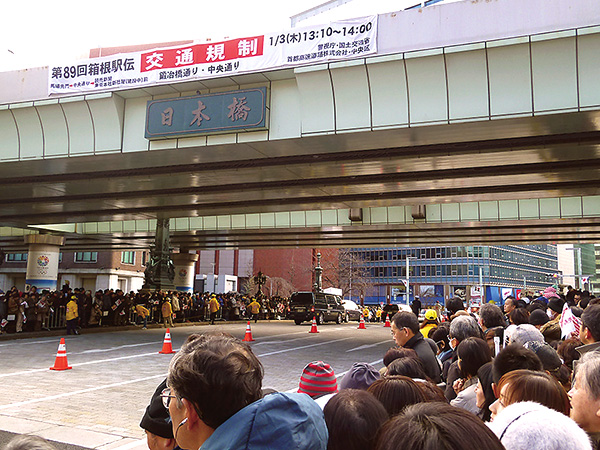
The Tokyo-Hakone Ekiden (Return Trip)
January 3
Universities in Japan compete annually in an epic relay marathon stretching from Tokyo to the neighboring city of Hakone. Every year a number of compelling stories emerge. Witness the neck-and-neck battle right before the race’s final goal in Nihonbashi.

Hatsu-Suitengu Shrine
January 5
Suitengu Shrine holds celebrations, large and small, on the 5th of every month. The first festival of the year, held on January 5th, is called Hatsu-Suitengu, the First Suitengu Shrine, and is especially lively and full of interesting performances, crafts, and events.
February
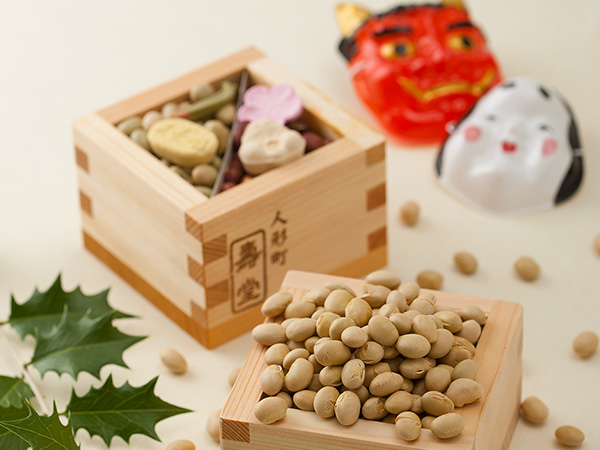
Setsubun Festival
February 3
One of Japan’s annual Setsubun celebrations, a festival where participants toss beans to ward off demons, is held at Suitengu Shrine. The festivities are especially popular with children, and every year the area is alive with large crowds of shrine visitors.